Learnings from a Q&A-session about publishing games on Steam with Valve
I recently had the chance to co-organize a Q&A session with several folks from Valve as a part of our ongoing “Next Level Gamedev Sessions” event series. The topic was “Publishing games on Steam” and a lot of interesting questions were answered. I thought I’d write up the key learnings and most interesting questions here on this blog!
We were joined by five members of the Valve team: Alden Kroll, Erik Peterson, Nathaniel Blue, Jan-Peter Ewert, and Dennis Geels. This blog post will give a summary of my notes, not direct quotes. Topics ranged from the basics of how Steam works, over best practices for gaining visibility and in-depth answers about monetization and different feature requests.
Alden started with a description of the main pillars of the Steam platform: for one, the main focus is to create happy customers and give players a way to find games that they like. To achieve this, Steam is built around personalization for each user. The other pillar of the platform is giving developers the tools they need for their day to day business operations.
Events and demos
One of these tools Steam provides are events like the Steam Next Fest, which Valve plans to hold about three times a year from now on. Developers should definitely participate, if they can. It’s a great way to get a demo in front of players without having it up permanently. Developers should design their demos to be interesting, but also leave the players wanting more. Another brief topic was that events like the Ludonarracon are a great way to gain visibility and developers should keep an eye out for opportunities like that.
Nathaniel noted that when you join events like that, it’s important to plan ahead and not have a sale for the game 45 days before and after the event. We also briefly talked about best practices for releasing demos or prologues for games. Many developers create a separate store page for their demos, which has the advantage that it’s another page for players to find in their recommendations, which adds to your game’s visibility. The downside of this approach is that some customers will be confused and wishlist the “wrong” store entry, and never find the full version of the game on Steam.
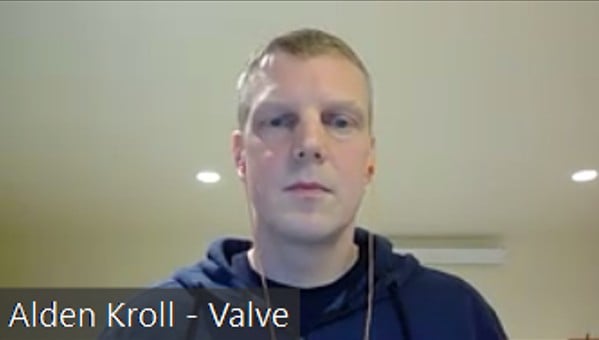

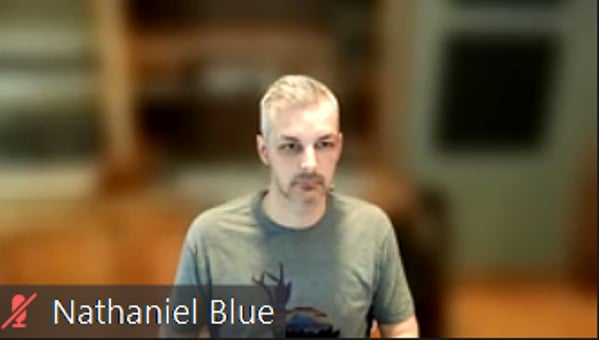


The recommendation engine
Various factors play into what a user sees on their Steam front page. It’s a combination of the games we play, curators/publishers we follow, the time we spend playing specific games, who our friends are and what they play, and what Alden called the “recommendation engine”. Furthermore, setting up a developer/publisher page allows both players and Steam to learn which games are connected via the same developers.
Nathaniel later shared that Valve is putting a lot of effort into improving recommendations, but nothing is perfect. Developers should ask themselves: what are our players really interested in? Devs should not rely on the algorithm and Steam alone but should have a fully-fledged marketing-plan how to reach players on other platforms to then channel them to Steam.
We also discussed if it is important to keep the Steam page alive through incremental updates every now and then – and yes, that is important, but not for the algorithm. The Steam algorithm does not care about updates, but it’s a good signal to send to players. Instead, the algorithm only looks at sales data (Alden later provided the detail that this is based on revenue, not number of sales) for premium games and player count/playtime for free to play titles. “There is not a lot of magic done by the algorithm”. The algorithm is designed to pick up and react to a burst of activities – so we should try to create spikes in our sales data to trigger the algorithm. This is also what drives the “new and interesting” charts on the front page.
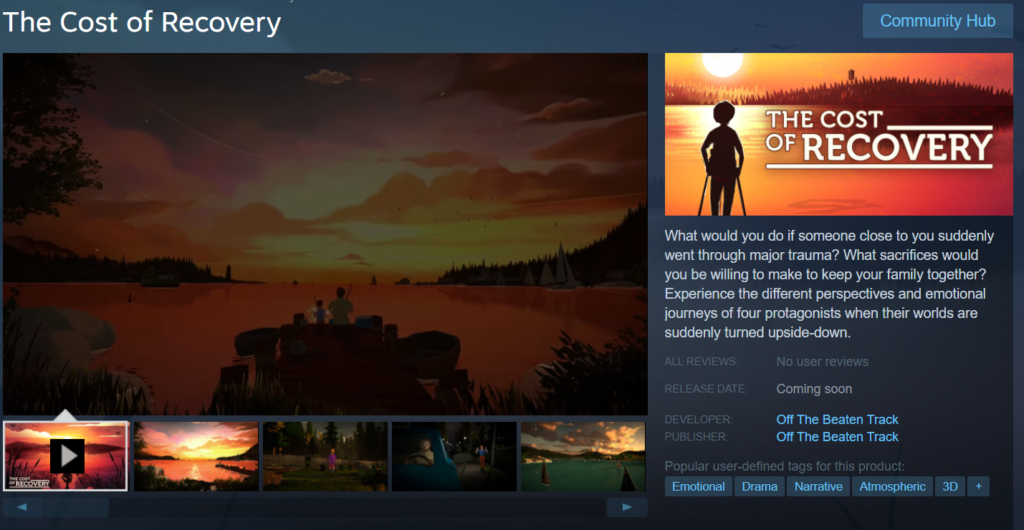
Reaching your audience
When asked “what would be your top tips for developers to make sure they reach their target group?”, Alden gave us four bullet points:
- Set the right tags on your store page. Tags came up several times during the session and it was often repeated that they are a crucial part of game visibility. They recommend to use the tagging wizard to find the best tags for a game. For a later question we also discussed the “top 5 tags” and learned that the first five tags you add to your game are the most crucial – and you should avoid to use extremely common tags like “indie” or “adventure” as part of your first five tags. It’s also a good idea to fine-tune and change the tags every now and then – to improve the targeting of your page, but also to dip into various recommendation zones from time to time.
- Think about communicating with your potential audience – especially through the events & announcements system. It has recently been updated and Alden was a part of the development team on it. He recommends to communicate all sorts of interesting things and even said we should use “any excuse you can come up with to communicate with your players”. This could be a sneak peak of the game, dev Q&As, play with the devs events, blog posts, etc. All this lets people know that the game is alive and actively developed.
- Put effort into crafting the best trailers, screenshots, and descriptions that you can. Communicate what’s unique and different about your game but also stay accurate. Don’t overpromise or use pre-rendered graphics for screenshots. Your Steam page should communicate what your game really is, and why players should be excited about your game.
- Localization is important! This topic came up again and again during the session as well. You definitely should translate your store page into different languages. This will enable you to see your wishlists broken down by region – which can be a good indicator for which languages to translate the game into. Erik later also shared that the visibility of a game without localization might be limited – players who indicated that they only speak a certain set of languages will be less likely to see games that aren’t available in any of the languages the player understands. Players don’t see games that they don’t understand. These days, the majority of Steam users doesn’t speak English any more.
- Erik jumped in and reinforced the importance of getting your Steam page up early. This allows you to collect wishlists and follows – people simply have more time to stumble over your game and add you to their lists. Users who have wishlisted your game will receive an email once your game is released or it’s entering a sale of 20% or more. Followers will get notified about news about your game in their Steam news hub.
Alden said that some people try to create a connection between the number of wishlists and the success of a game. Based on the data Steam has, there is no magic ratio to predict how the sales are going to perform based on wishlists – but there is a loose correlation. Mainly because the wishlist count is an indicator of how well the developers have done marketing-wise prior to release.
The team also indicated that it’s a good idea to use the features Steam is offering you to save time and improve the quality of life for your players. But they could not provide a general recommendation which features to implement, because it highly depends on the kind of game. Erik recommended to look at the login page of Steamworks and scroll down for a great overview of the features Steam offers.
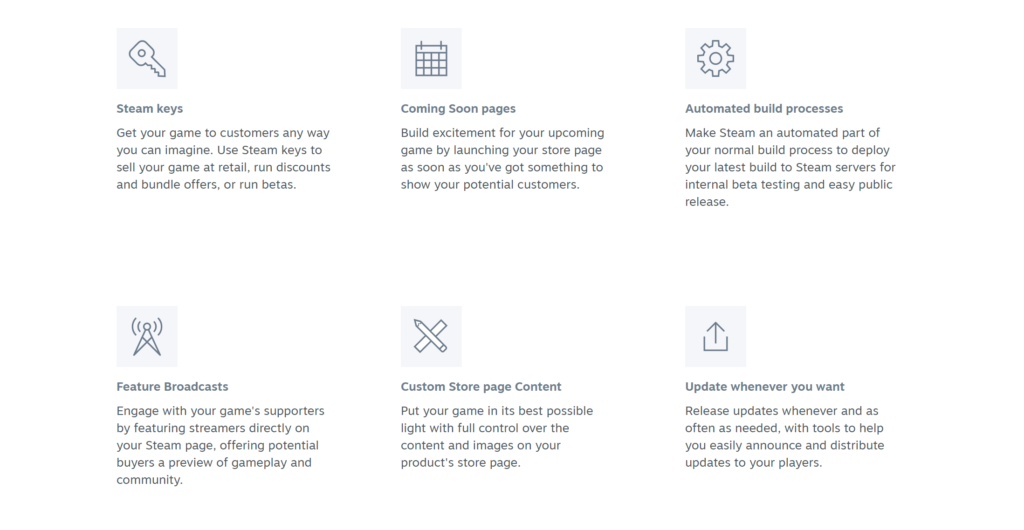
Submitting your game
When asked about common mistakes when submitting games, Alden shared his top 5 list of why submissions on Steam are rejected:
- Some developers over-promise on their store page and then submit a game that doesn’t deliver on those promises. This happens particularly often when store pages are submitted early and the game is released years later – and nobody updated the store description in the meantime.
- Wrong controller-support is provided. Controller support came up a few times during the QA session. Developers should really read what the different kinds of controller support mean and make sure they meet all the requirements – e.g. a game should be able to handle it when controllers are disconnected in the middle of the game.
One participant asked why developers should use the “Developer’s Recommended Setting” if they already have a native solution for full controller support in their game. Alden replied that Valve uses “the developer recommended setting in the Steam Input system to help map your recommended set up when a user plugs in another controller that you may not officially support. We realize this is extra effort for you, however we think the payoff is worth it” - The store page is not matching the standards. This can be anything from missing images, wrong use of the capsule art or trying to “put in stuff here that doesn’t fit”. Developers should strive to use the images on the store page to show beautiful art that matches the game.
- Insufficient description text.
- Vague early access feature descriptions. In general, the store page should clearly communicate what to expect from the game.
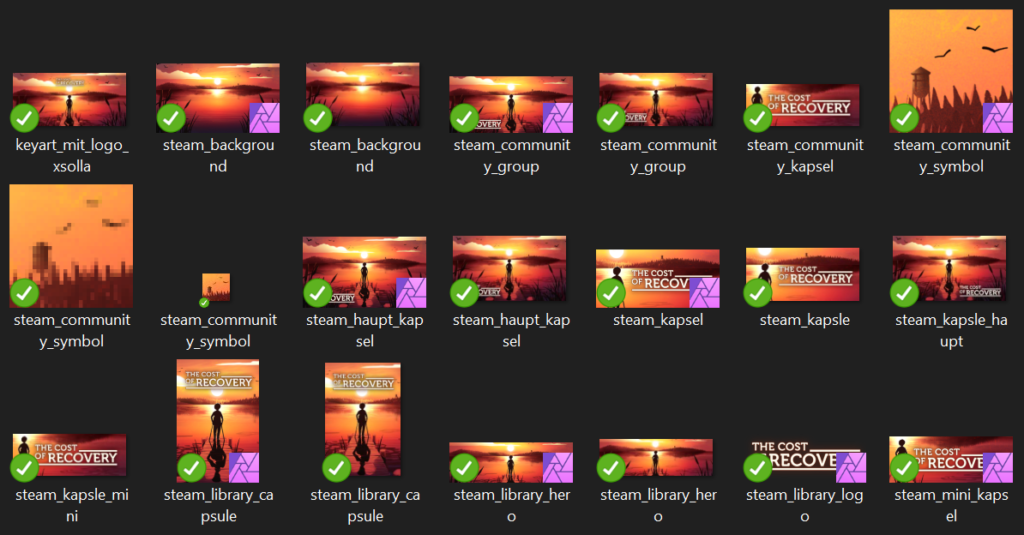
Other random bits of information
- Valve realizes that using two domains for different parts of the backend is confusing (https://partner.steamgames.com/ and https://partner.steampowered.com/), but we’ll have to get used to it. These exist for historic reasons and there are no current plans to unify this.
- We briefly talked about the new UTM-tracking feature, but the team said that it’s too early to say if there are best practices or general learnings. Alden briefly noted that there are still a few issues, one being that many people end up in browsers where they are not logged into Steam. He said that about 10% of clicks can be tracked with a valid Steam login. Erik also recommended this video for an overview of the UTM system.
- One question was about a game whose status profile showed that it is “Profile Features Limited” (i.e. achievements of steam trading cards could be locked off). This is done to “make sure players buy games for the right reasons” and will be unlocked once the game reaches a certain amount of sales.
- When asked about the possibility of a pay-what-you-want option, Nathaniel said that they simply haven’t thought about that yet so he has no info to share. But it’s not a “no”. However, when asked about adding a Patreon-like monetization structure for publishers, Erik was pretty clear that that’s currently not a part of Steam’s strategy. Steam is designed for selling existing games, not funding games that might maybe be finished someday.
- There are no plans to allow alternative payment methods other than the Steam Wallet for transactions within a game.
- There are no plans to create an alternative to SteamSpy etc. Alden said that “it’s an interesting idea”, but they haven’t figured out a way yet that’s good for the privacy of other game devs and not just leaking sales data. He also said that the existing platforms don’t have perfect data. He said that they’d like to be able to give developers tools to make decisions like that, and it’s interesting to make a game based on data.
- The best way to reach the Steam team is via the support ticket feature on Steam. It’s staffed 24/7 and they usually answer within hours.






